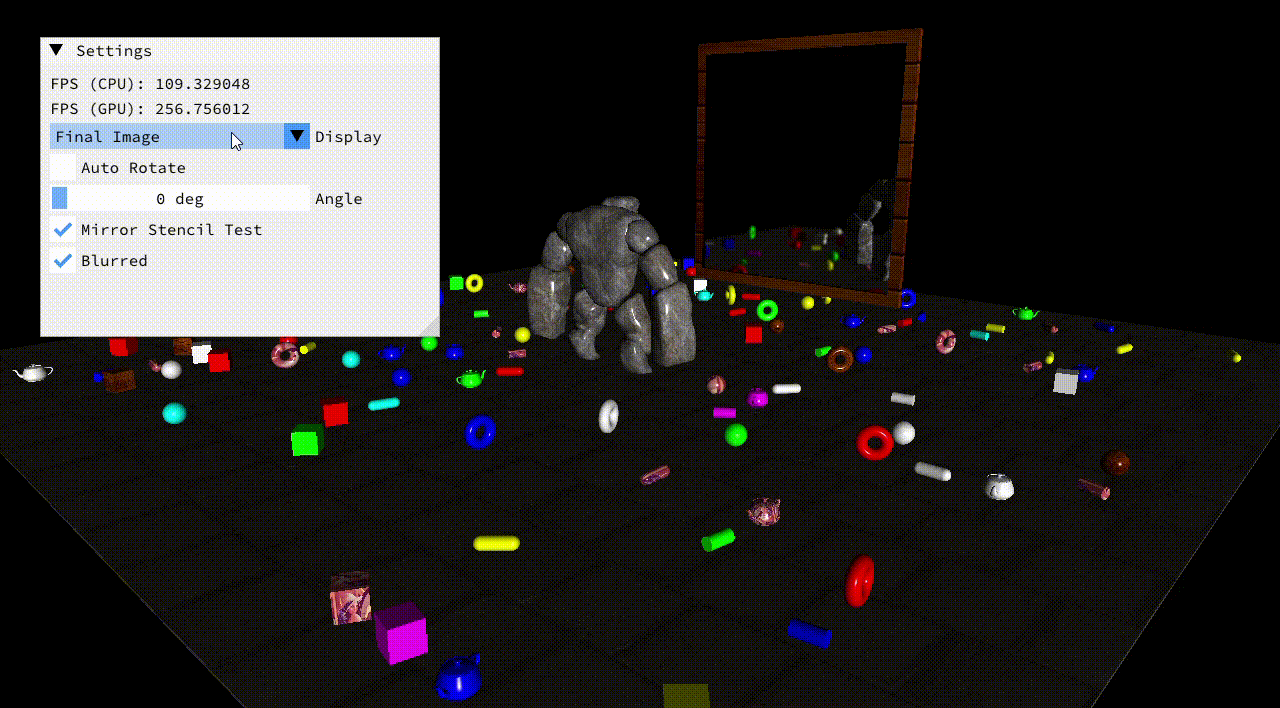
Introduction
This project demonstrates how to create a mirror effect in OpenGL using stencil buffers, framebuffers, and object masking. The result is a composed scene where the mirror view is rendered realistically, with optional blur outside masked objects.
Approach
The mirror was built using a multi-pass rendering pipeline:
Mirror Camera Transformation
The mirror camera is derived from the main camera by reflecting its view matrix across the mirror plane.$$ V_{mirror} = V \cdot M \cdot R_z \cdot M^{-1} $$
- $V$ = Main camera view matrix
- $M$ = Mirror transform
- $R_z$ = Reflection matrix across the z-axis
Framebuffer Setup
Real FBO: Renders the normal world view.
Mirror FBO: Renders the mirrored scene for use inside the mirror.
Mask FBO: Defines regions where blur should not be applied.
Scene Composition
A shader composites the textures into a final full-screen quad:- Mirror content is blurred with Gaussian blur.
- Objects within the mask remain sharp.
Performance
Tested on: Intel Core i5-1335U, Intel Iris Xe Graphics, 16GB RAM
| Scene | FPS (CPU–GPU) |
|---|---|
| Composed Scene | 90–250 |
Conclusion
This project shows how reflection matrices, FBOs, and masking can work together in OpenGL to create a performant, realistic mirror system. The method is modular and can be extended to portals, water reflections, or multi-layered effects.
You can find the project below.
